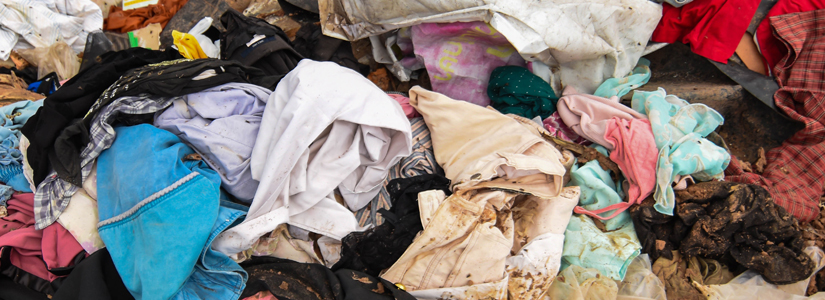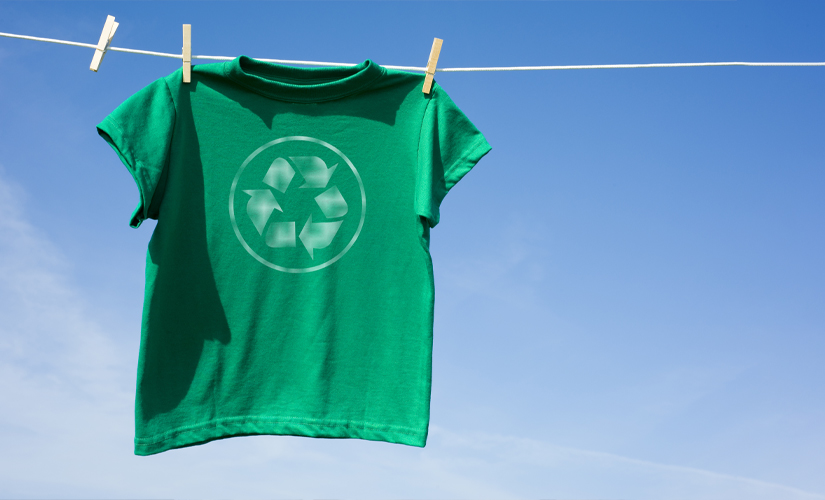So, what is circular fashion?
Put very simply, circular fashion a concept. It is a model for sustainable change within the fashion industry. For more information on sustainable fashion, check out our post on that here. A circular fashion approach would see your clothing have a circular fashion life cycle, rather than a linear one. So instead of being made, doing its thing, and then being disposed of, it would be recycled and loop back to the beginning again.
What’s that got to do with being a revolution?
Circular fashion is a shopping revolution that could help save the earth, no ifs or buts about it. Here’s how.
A lot of the clothes disposed of in our society today are fast-fashion items, which are produced for the economy market. People are wearing those clothes about 50% less times than they used to, and once they become unwanted, 86% of them will go to landfill.
Once clothes are in landfill, they can sit there for more than 200 years (depending on the materials that they are made from) decomposing. This is due to the fact that landfills are not designed to assist in decomposition, but instead, are designed solely for the purpose of storage, so everything happens at a much slower rate.
The thing is, the process of something decomposing releases methane into the air. Methane is a greenhouse gas, and if there is anything, anything at all, that I remember from elementary school it’s that greenhouse gases are bad. Upon further research as an adult, it’s much worse than I originally thought.
Greenhouse gases cause the greenhouse effect. This is done by it absorbing and emitting radiant energy. This energy is within the infrared range. The greenhouse effect is a direct result of that radiation warming the planet. Methane is 25 times more potent than carbon dioxide, so it’s definitely not a good thing.

The Circular Fashion Cycle
Sourcing
This is a two-part process that not only includes farming and harvesting the materials, but also the spinning and weaving, bleaching, tanning, or the creation of synthetic materials.
Design
Creating the actual design of a garment isn’t a simple process either. It’s entirely uncommon for someone to have an idea, make it, and think “Yes, that’s perfect exactly the way it is.” This means that there often multiple revisions throughout the process.
Manufacturing
Then we get on to actually making the product. This can be done in a number of ways depending on the item you’re making, and what you’re making it from too. Often this is done with heavy machinery or in a sweatshop somewhere.
Shipping
Again, a multi-point process as the shipping happens all over. There is the shipping of the materials to the manufacturer, the shipping of the garment to the store, and sometimes there is the shipping from the store to you. If you opt to shop instore, there is then the additional shipping for the signage and promotions, etc that the store has. Often these shipping routes come to the US from other countries.
Usage
This is the part where you have the item. It includes your shopping to purchase said garment, as well as its lovely life of being worn, washed, dried, worn, washed, dried, and so on. Which, as we said earlier on, you’re likely to do 50% less than you would have done 20 years ago.
Disposal
This is where people throw their clothes away, this is a bad thing. Historically it was the only option and it caused the life cycle of a fashion item to be an exclusively linear one. Unfortunately, it is still, even now, the most popular option.
This should not be the end of the line – Recycle
This is the step that transforms the linear life ‘line’ of fashion into the circular fashion life ‘cycle’. Recycle instead of dispose. This then takes us straight back to the sourcing part of the cycle, making everything continuous and flowing instead of a start-stop process.

What happens next?
We can re-use the fashion items, and that’s not just recycling the fabric, but we can re-use the components too. From zips and buttons to buckles and chains, there are so many parts of your old clothes that can be recycled and reused. Currently, only 1% of unwanted fashion items are recycled, which is but a scratch compared to the 86% that are shipped to landfill.
So How Will This Shopping Revolution Save the Earth?
If more clothing and fashion items get recycled, then fewer end up in landfill, and much less of those harmful greenhouse gases will be released into the atmosphere. This, in turn, will slow down the effects of global warming. It might not sound like much, but as the well-known Chinese proverb states, “A journey of a thousand miles begins with a single step”.
At this point, the main thing that you need to ask is are you part of the 1% doing their bit to save the planet? Or the 86% doing theirs to destroy it?


